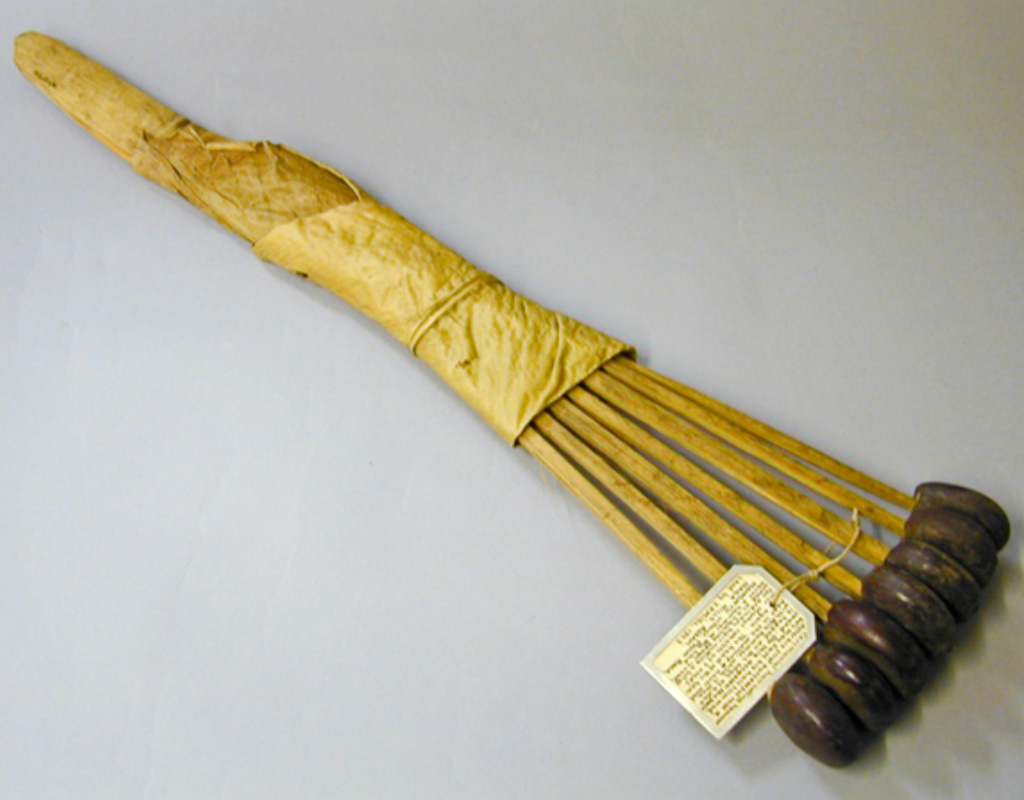Hair-cutting tool
Phom Naga people, Nagaland, India
 Collected by James Philip Mills in 1923, and donated by him in 1928; 1928.69.496This large tool is a hammer. It is made from a length of bamboo partly wrapped up in a leaf and split into seven rods, each topped with the conker-sized seeds of a native species of creeper. This plant is associated with fertility, related not only to the hope of increasing the population of the village, but also of increasing the yields from the fields and from raids on neighboring villages.
Collected by James Philip Mills in 1923, and donated by him in 1928; 1928.69.496This large tool is a hammer. It is made from a length of bamboo partly wrapped up in a leaf and split into seven rods, each topped with the conker-sized seeds of a native species of creeper. This plant is associated with fertility, related not only to the hope of increasing the population of the village, but also of increasing the yields from the fields and from raids on neighboring villages.
The hammer would be used in the cutting of a young Phom Naga man's hair after his first successful raid. It was used to tap a large machete (dao), which trimmed the hair in a bowl-like shape, the seeds making a distinctive rattling noise all the while. Afterwards, the hammer was not used again but instead placed in the morung, the dormitory hut where the young men slept and where other special ornaments and weapons were kept.
